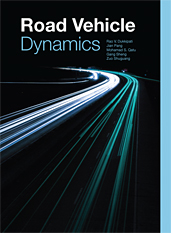Journal Article
Vehicle Design for Robust Driveline NVH Due to Imbalance and Runout Using a Monte Carlo Process
2011-05-17
2011-01-1546
Variation in vehicle noise, vibration and harshness (NVH) response can be caused by variability in design (e.g. tolerance), material, manufacturing, or other sources of variation. Such variation in the vehicle response causes a higher percentage of produced vehicles with higher levels (out of specifications) of NVH leading to higher number of warranty claims and loss of customer satisfaction, which are proven costly. Measures must be taken to ensure less warranty claims and higher levels of customer satisfaction. As a result, original equipment manufacturers have implemented design for variation in the design process to secure an acceptable (or within specification) response. This paper focuses on aspects of design variations that should be considered in the design process of drivelines. Variations due to imbalance and runout in rotating components can be unavoidable or costly to control.


